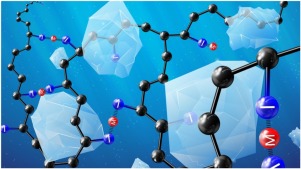当前位置:
X-MOL 学术
›
Dent. Mater.
›
论文详情
Our official English website, www.x-mol.net, welcomes your
feedback! (Note: you will need to create a separate account there.)
Effect of poly(acrylic acid) architecture on setting and mechanical properties of glass ionomer cements.
Dental Materials ( IF 4.6 ) Pub Date : 2020-01-25 , DOI: 10.1016/j.dental.2020.01.001 R Wetzel 1 , O Eckardt 2 , P Biehl 2 , D S Brauer 1 , F H Schacher 2
Dental Materials ( IF 4.6 ) Pub Date : 2020-01-25 , DOI: 10.1016/j.dental.2020.01.001 R Wetzel 1 , O Eckardt 2 , P Biehl 2 , D S Brauer 1 , F H Schacher 2
Affiliation

|
OBJECTIVE
This work focuses on the influence of poly(acrylic acid) (PAA) architecture (linear or branched) on setting behavior and compressive strength of glass ionomer cements (GICs).
METHODS
Branched and linear poly(acrylic acid)s were synthesized according to the Strathclyde methodology or by free radical polymerization. They were characterized by 1H-NMR spectroscopy and size exclusion chromatography to determine their molecular weight and size distribution. GIC setting was characterized by oscillating rheometry and time-dependent FTIR spectroscopy. In addition, compressive strength was tested on cylindrical samples (6 × 4 mm; n = 8/cement composition) after storage in deionized water at 37 °C for one day.
RESULTS
We used two different routes to prepare PAA. One direct route in order to provide straightforward access to branched PAA and a two-step approach in order to get more control about the PAA molecular weight using tert-butyl acrylate (tBA) for polymerization with subsequent deprotection. Using the second approach we obtained several linear PAA of which a mixture was used in order to mimic the molecular weight and size distribution of branched PAA. This allowed the direct comparison of properties relying only on the polymer architecture. Comparing linear PAA to branched samples in general led to faster setting but at the same time decreased the compressive strength. Increasing molecular weight of branched PAA resulted in even faster GIC setting while increasing compressive strength and this correlates well with the trends reported for linear PAA in literature. Mixing of branched and linear PAA, however, turned out to be an effective way of tailoring GIC properties.
SIGNIFICANCE
our results suggest that both molecular weight and dispersity need to be considered when choosing suitable PAA architecture for obtaining specific GIC properties.
中文翻译:

聚丙烯酸结构对玻璃离聚物水泥固结和力学性能的影响。
目的这项工作的重点是聚丙烯酸(PAA)结构(线性或支化)对玻璃离聚物水泥(GIC)的固化性能和抗压强度的影响。方法根据Strathclyde方法或通过自由基聚合合成支链和线性聚丙烯酸。通过1 H-NMR光谱和尺寸排阻色谱对其进行表征,以确定其分子量和尺寸分布。GIC设置的特征是振荡流变仪和时间依赖性FTIR光谱。此外,在圆柱状样品(6×4 mm; n = 8 /水泥组合物)上的抗压强度在37°C的去离子水中存储一天后进行测试。结果我们使用两种不同的方法制备PAA。一种直接途径是为了提供对支链PAA的直接访问,而两步方法是利用丙烯酸叔丁酯(tBA)进行聚合并随后进行脱保护,从而获得对PAA分子量的更多控制。使用第二种方法,我们获得了几种线性PAA,使用它们的混合物来模拟支链PAA的分子量和尺寸分布。这允许仅依赖于聚合物结构的性质的直接比较。通常,将线性PAA与分支样品进行比较可加快设置速度,但同时会降低抗压强度。支链PAA分子量的增加导致更快的GIC凝固,同时增加了抗压强度,这与文献中报道的线性PAA的趋势非常相关。混合支链和线性PAA,然而,事实证明,这是定制GIC属性的有效方法。意义我们的结果表明,在选择合适的PAA结构以获得特定GIC特性时,既要考虑分子量,又要考虑分散性。
更新日期:2020-01-26
中文翻译:

聚丙烯酸结构对玻璃离聚物水泥固结和力学性能的影响。
目的这项工作的重点是聚丙烯酸(PAA)结构(线性或支化)对玻璃离聚物水泥(GIC)的固化性能和抗压强度的影响。方法根据Strathclyde方法或通过自由基聚合合成支链和线性聚丙烯酸。通过1 H-NMR光谱和尺寸排阻色谱对其进行表征,以确定其分子量和尺寸分布。GIC设置的特征是振荡流变仪和时间依赖性FTIR光谱。此外,在圆柱状样品(6×4 mm; n = 8 /水泥组合物)上的抗压强度在37°C的去离子水中存储一天后进行测试。结果我们使用两种不同的方法制备PAA。一种直接途径是为了提供对支链PAA的直接访问,而两步方法是利用丙烯酸叔丁酯(tBA)进行聚合并随后进行脱保护,从而获得对PAA分子量的更多控制。使用第二种方法,我们获得了几种线性PAA,使用它们的混合物来模拟支链PAA的分子量和尺寸分布。这允许仅依赖于聚合物结构的性质的直接比较。通常,将线性PAA与分支样品进行比较可加快设置速度,但同时会降低抗压强度。支链PAA分子量的增加导致更快的GIC凝固,同时增加了抗压强度,这与文献中报道的线性PAA的趋势非常相关。混合支链和线性PAA,然而,事实证明,这是定制GIC属性的有效方法。意义我们的结果表明,在选择合适的PAA结构以获得特定GIC特性时,既要考虑分子量,又要考虑分散性。











































 京公网安备 11010802027423号
京公网安备 11010802027423号